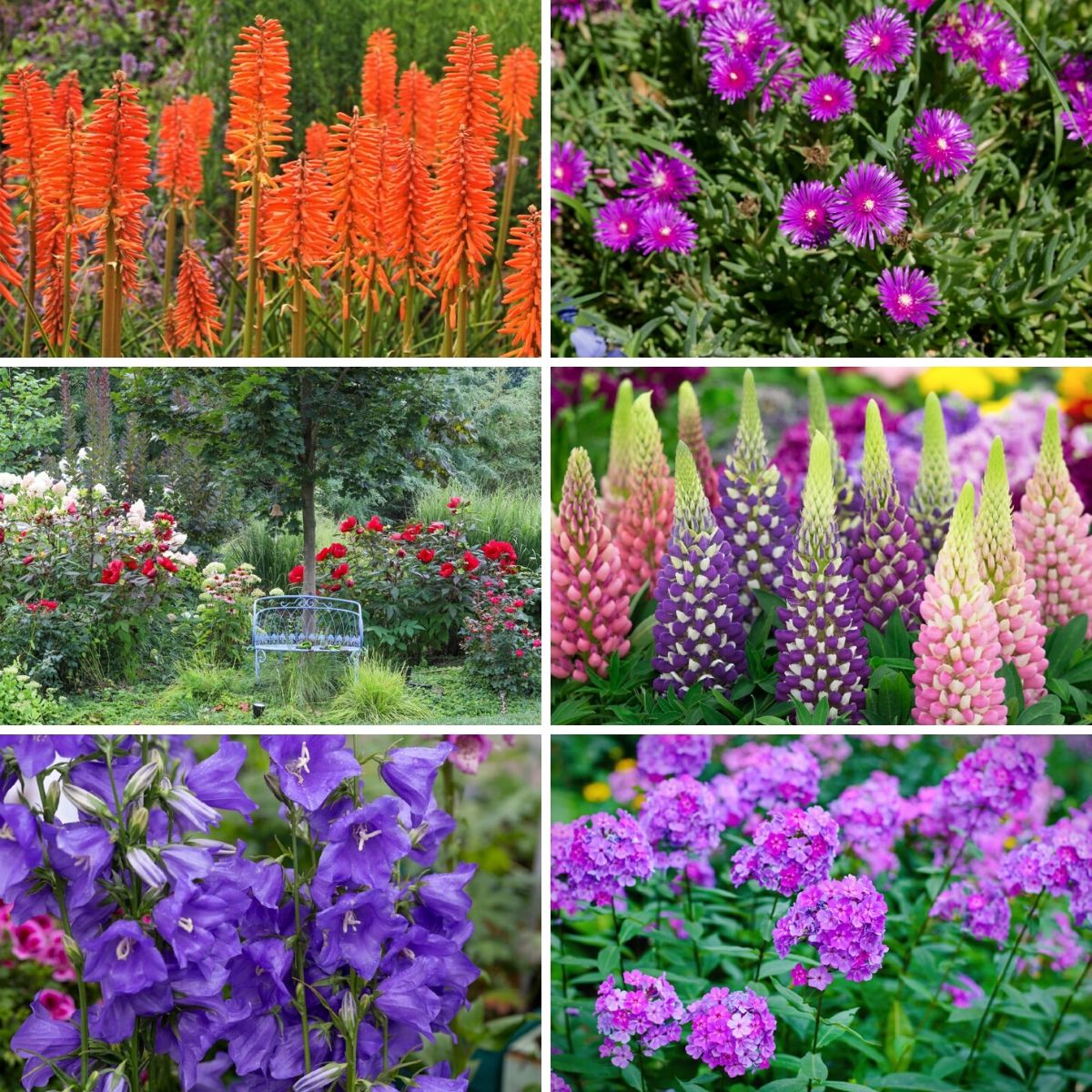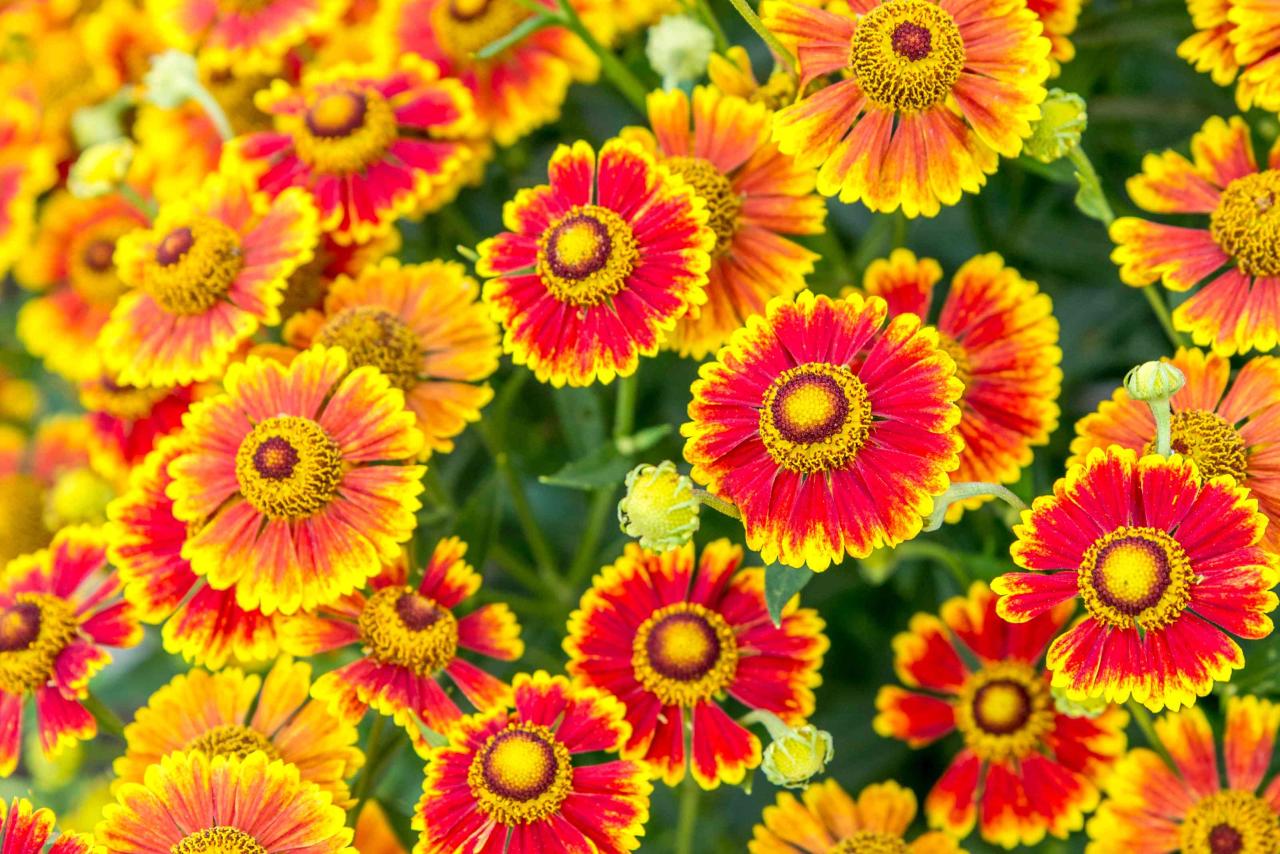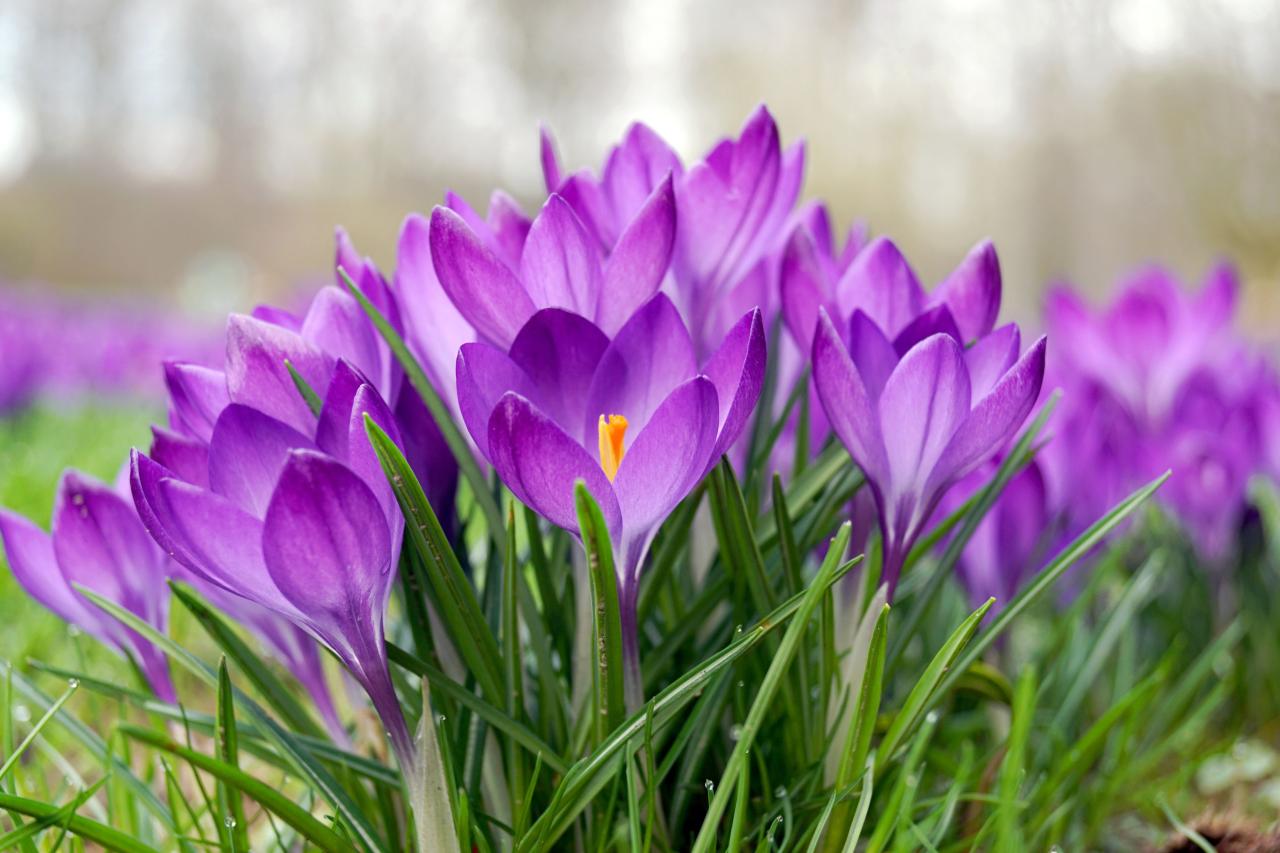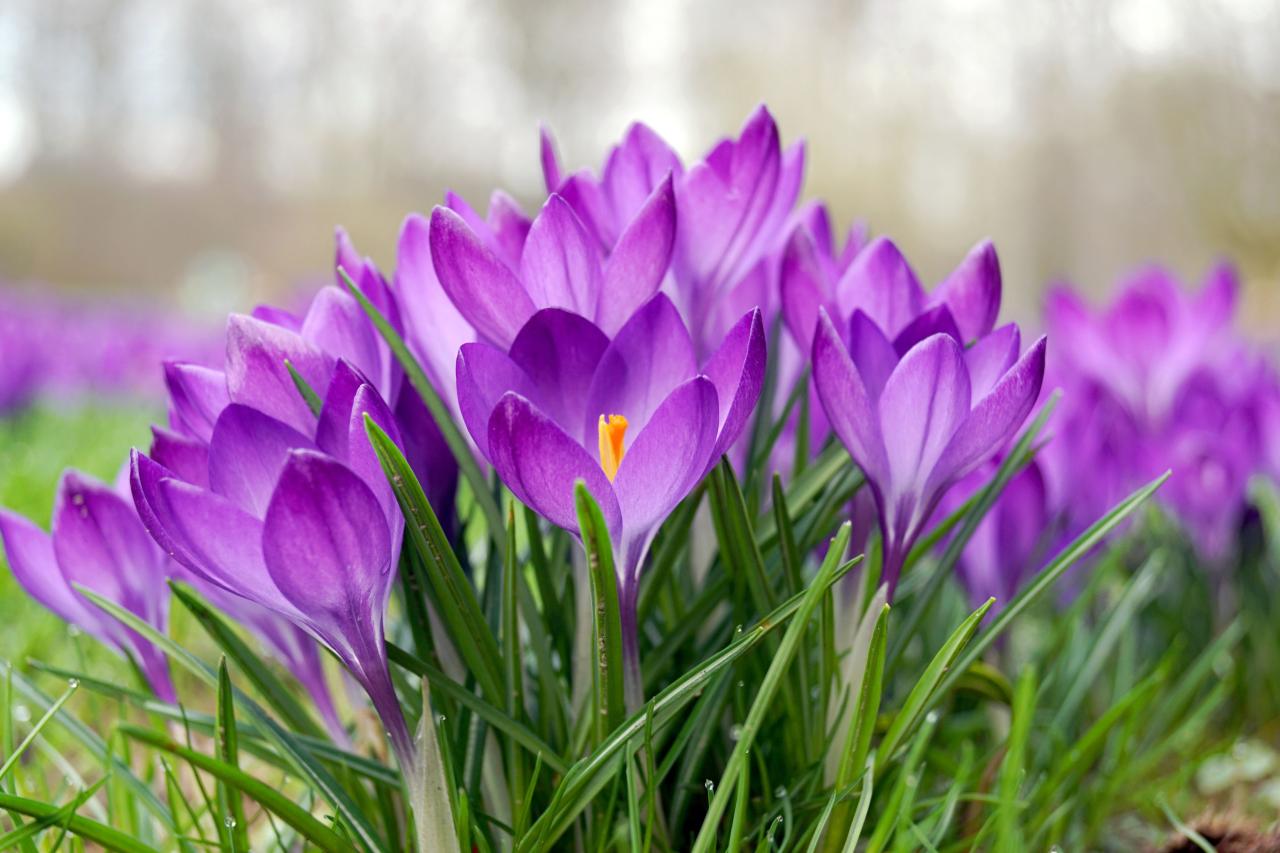Best Bulbs To Plant In Fall For Long-Lasting Spring Blooms: Imagine a spring garden bursting with vibrant colors and fragrant blooms, a testament to your foresight and planning. Fall is the perfect time to plant bulbs, giving them a chance to establish strong roots and prepare for a spectacular spring display.
Planting bulbs in the fall offers numerous advantages, including a longer blooming season and a chance to enjoy a wider variety of flowers. Let’s explore the best bulbs to plant in fall for long-lasting spring blooms, along with expert tips for planting and care.
From the classic tulips and daffodils to the more unusual fritillaries and allium, there’s a bulb for every taste and garden style. We’ll delve into the characteristics of different bulbs, their blooming times, and planting depths, providing you with the knowledge to create a stunning spring garden.
We’ll also cover essential planting techniques, including soil preparation, spacing, and drainage, ensuring your bulbs thrive and produce an abundance of blooms.
The Beauty of Fall-Planted Bulbs: Best Bulbs To Plant In Fall For Long-Lasting Spring Blooms

Fall is a magical time for gardeners, as it’s the perfect season to plant bulbs for stunning spring blooms. Planting bulbs in the fall gives them time to establish their roots and prepare for the spring’s growth spurt. This ensures healthy, vibrant blooms that will bring joy to your garden.
Planting bulbs in the fall offers several advantages. First, the cooler temperatures allow bulbs to develop a strong root system, which is essential for healthy growth. Second, fall planting ensures that bulbs have adequate moisture during the crucial establishment period.
Third, fall-planted bulbs can take advantage of the natural cycles of dormancy and emergence, resulting in more robust blooms.
Types of Bulbs
Bulbs are a diverse group of plants, each with its own unique characteristics. Some common types of bulbs include:
- Tulips: Known for their vibrant colors and wide variety of shapes and sizes, tulips are a popular choice for spring gardens.
- Daffodils: These cheerful yellow blooms are a symbol of spring and are known for their long-lasting beauty.
- Hyacinths: Hyacinths are known for their strong, sweet fragrance and come in a variety of colors, including purple, pink, and white.
- Allium: These bulbs produce globe-shaped flowers in shades of purple, pink, and white. They are a great addition to any garden and attract pollinators.
- Crocuses: These small, delicate flowers are among the first to bloom in spring, often emerging through the snow.
Best Bulbs for Long-Lasting Spring Blooms
Planting bulbs in the fall is a rewarding endeavor, offering a vibrant tapestry of colors when spring arrives. The anticipation of seeing these blooms emerge from the soil after a long winter is a joy for any gardener. But some bulbs are known for their extended blooming periods, providing a longer display of beauty.
Let’s explore some of the best bulbs for long-lasting spring blooms.
Bulbs for Extended Spring Blooms
Here’s a list of popular bulbs known for their long-lasting blooms, organized by bloom color, time, and planting depth. This table can help you choose the best bulbs for your garden and create a succession of blooms throughout the spring.
Bulb Name |
Bloom Color |
Bloom Time |
Planting Depth |
|---|---|---|---|
Allium (Ornamental Onion) |
Purple, white, pink, yellow |
Late spring |
6-8 inches |
Crocus |
Purple, white, yellow, blue |
Early spring |
3-4 inches |
Hyacinth |
Blue, purple, pink, white, yellow, red |
Mid-spring |
6-8 inches |
Iris |
Blue, purple, yellow, white |
Late spring |
4-6 inches |
Lily |
White, yellow, orange, pink, red, purple |
Mid-spring to summer |
6-8 inches |
Narcissus (Daffodil) |
Yellow, white, orange, pink |
Early to mid-spring |
6-8 inches |
Tulips |
Wide variety of colors |
Mid-spring |
6-8 inches |
Planting Techniques for Fall Bulbs

Planting bulbs in the fall ensures they have time to establish roots before winter arrives, leading to beautiful blooms the following spring. Understanding the ideal planting time, soil conditions, and proper techniques will maximize your chances of success.
When choosing the best bulbs to plant in fall for long-lasting spring blooms, consider the companion plants that will thrive alongside them. To ensure your spring garden is a symphony of color and texture, learn about the ideal partners for your bulbs by exploring The Best Companion Plants For Spring Bulbs You Plant In Fall.
This knowledge will help you create a harmonious garden where the beauty of your spring bulbs is enhanced by their complementary companions.
Optimal Planting Time
The best time to plant bulbs varies depending on your region’s climate. Generally, aim to plant bulbs six to eight weeks before the first frost. This allows them to develop roots but prevents them from emerging too early and getting damaged by freezing temperatures.
- Northern Regions:September and October are ideal months for planting bulbs in northern regions.
- Southern Regions:Planting bulbs in October or November is recommended for southern regions.
- Mild Climates:In mild climates with no frost, bulbs can be planted throughout the fall and even into early winter.
Step-by-Step Planting Instructions
Follow these steps for successful bulb planting:
- Prepare the Soil:Choose a sunny location with well-drained soil. Amend the soil with compost or other organic matter to improve drainage and fertility.
- Dig Planting Holes:Dig holes twice the depth and width of the bulb. The bulb’s pointy end should face upwards.
Spacing: Space bulbs according to their size and variety. Smaller bulbs can be planted closer together, while larger bulbs require more space.
- Plant the Bulbs:Place the bulbs in the holes, ensuring the pointy end faces upwards. Cover the bulbs with soil and gently pat down the soil around them.
- Water Thoroughly:Water the planted bulbs deeply to settle the soil and encourage root development.
Drainage and Sunlight Exposure, Best Bulbs To Plant In Fall For Long-Lasting Spring Blooms
Proper drainage and sunlight exposure are crucial for bulb success.
- Drainage:Bulbs require well-drained soil to prevent them from rotting. If your soil is prone to waterlogging, amend it with compost or other organic matter to improve drainage.
- Sunlight:Most bulbs thrive in full sun to partial shade. Ensure the planting location receives at least six hours of sunlight daily.
Bulb Combinations for Stunning Spring Displays
Creating a vibrant and long-lasting spring garden is a joy, and combining different bulbs is a fantastic way to achieve this. By strategically pairing bulbs with varying bloom times and colors, you can create a symphony of color that unfolds throughout the spring season.
Planting bulbs in the fall is a great way to ensure a beautiful spring garden. For long-lasting blooms that extend the season, consider varieties that flower in late spring, like alliums, lilies, and peonies. To find out more about the best late-spring flowering bulbs to plant in fall, check out this helpful resource: Best Late-Spring Flowering Bulbs To Plant In Fall.
With careful selection, you can create a vibrant and fragrant display that will delight you for weeks to come.
Bulb Combinations for a Visual Symphony
Here are a few bulb combinations that will bring a touch of magic to your spring garden:
- Early Spring Burst:For a dazzling start to the season, plant a combination of crocuses ( Crocus spp.) in shades of purple, yellow, and white alongside early-blooming tulips ( Tulipa spp.) in vibrant reds, oranges, and yellows. These bulbs will create a vibrant tapestry of color that will quickly transform your garden from winter’s slumber to a spring wonderland.
- Pastel Paradise:Create a serene and elegant ambiance with a combination of soft pink and white tulips ( Tulipa spp.) paired with delicate, fragrant hyacinths ( Hyacinthus orientalis) in shades of pale pink and white. This combination will create a gentle and romantic atmosphere, perfect for a tranquil garden setting.
- Contrasting Colors:For a dramatic and eye-catching display, combine bold, contrasting colors like deep purple alliums ( Allium spp.) with bright yellow daffodils ( Narcissus spp.). The tall, spherical flower heads of the alliums will provide a striking focal point, while the cheerful daffodils will add a burst of sunshine to the display.
- Textural Delight:Play with different textures and heights by combining frilly, double-flowered tulips ( Tulipa spp.) with the delicate, bell-shaped flowers of grape hyacinths ( Muscari spp.). The contrasting textures will add depth and interest to the display, creating a captivating visual experience.
Tips for Selecting Complementary Colors and Textures
- Color Wheel:Use the color wheel as a guide for selecting complementary colors. For example, pairing purple and yellow, or blue and orange, will create a visually stimulating contrast.
- Warm and Cool Tones:Consider the balance of warm and cool tones in your garden. Warm colors like reds, oranges, and yellows tend to advance towards the viewer, while cool colors like blues, greens, and purples tend to recede.
- Texture and Height:Vary the textures and heights of your bulbs to create a more dynamic display. Combine tall, spiky alliums with low-growing crocuses or delicate grape hyacinths.
Troubleshooting Common Bulb Problems

Even with the best care, bulbs can sometimes encounter issues that affect their growth and blooming. Understanding common problems and their solutions can help ensure a vibrant spring display.
Identifying and Addressing Pests
Pests can damage bulbs and hinder their growth. Common culprits include:
- Bulb Flies:These flies lay eggs in the soil, and their larvae feed on bulbs, causing them to rot.
- Nematodes:Microscopic roundworms that can damage bulbs and roots, leading to stunted growth and wilting.
- Rodents:Mice, voles, and squirrels can dig up bulbs and feast on them.
To address pest problems:
- Inspect Bulbs Before Planting:Check for any signs of damage or infestation before planting.
- Use Insecticides:Apply insecticides to the soil before planting to deter pests.
- Protect Bulbs with Barriers:Use wire mesh or other barriers to prevent rodents from digging up bulbs.
Preventing and Treating Diseases
Bulb diseases can also cause problems, leading to poor growth and wilting. Common diseases include:
- Bulb Rot:Caused by fungal infections, bulb rot can cause bulbs to soften and decay.
- Viral Diseases:These diseases can cause discoloration, stunted growth, and deformed flowers.
- Fungal Diseases:These diseases can cause spots, lesions, and other deformities on leaves and flowers.
To prevent and treat diseases:
- Choose Disease-Resistant Varieties:Select bulbs known for their resistance to common diseases.
- Practice Good Sanitation:Remove and discard any infected bulbs to prevent the spread of disease.
- Rotate Crops:Plant bulbs in different areas each year to reduce the buildup of pathogens in the soil.
- Use Fungicides:Apply fungicides to the soil before planting to help prevent fungal diseases.
Understanding Improper Care Issues
Incorrect care can also lead to problems with bulb growth and blooming:
- Overwatering:Too much water can cause bulbs to rot.
- Underwatering:Insufficient water can lead to stunted growth and poor flowering.
- Poor Drainage:Bulbs need well-drained soil to prevent waterlogging.
- Incorrect Planting Depth:Planting bulbs too deep or too shallow can affect their growth.
To address improper care issues:
- Water Bulbs Deeply:Allow the soil to dry slightly between waterings.
- Ensure Good Drainage:Amend heavy clay soils with compost or sand to improve drainage.
- Plant Bulbs at the Correct Depth:Follow planting instructions for each bulb variety.
Final Wrap-Up
Planting bulbs in the fall is a rewarding experience, promising a vibrant and colorful spring garden. By choosing the right bulbs, following proper planting techniques, and providing adequate care, you can create a breathtaking display that will delight you for years to come.
So, get ready to transform your garden into a haven of spring beauty with these long-lasting blooms.
Helpful Answers
What are the best bulbs for beginners?
Tulips and daffodils are excellent choices for beginners due to their ease of planting and care. They are also widely available and come in a variety of colors and sizes.
When is the best time to plant bulbs in fall?
The optimal planting time varies depending on your region’s climate. Generally, aim to plant bulbs 6-8 weeks before the first frost.
Do I need to fertilize bulbs after planting?
Fertilizing bulbs in the fall is not essential, but it can help them establish strong roots and produce more flowers the following spring.
What should I do if my bulbs don’t bloom?
Several factors can affect bulb blooming, including improper planting depth, poor drainage, and lack of sunlight. Ensure your bulbs are planted at the correct depth and in a well-drained location with adequate sunlight.
